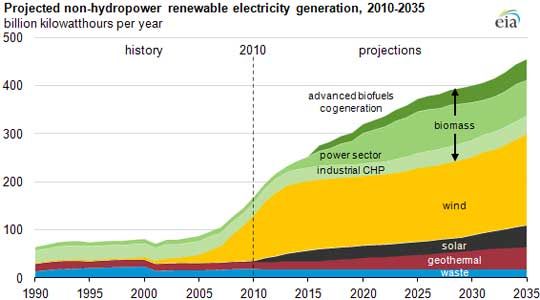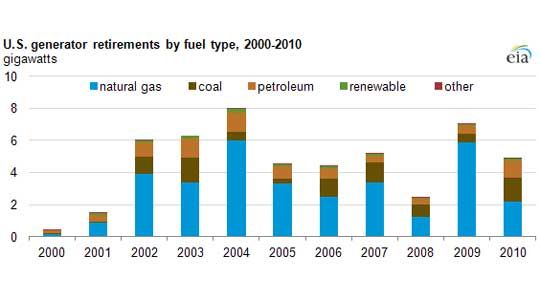New estimates by the U.S. Energy Information Agency predict that coal consumption in 2012 will fall to the lowest levels since 1996. That is in line with earlier figures from the EIA that found coal generation was at a 30-year low in 2011.
The amount of coal consumed by the electricity industry dropped by about 5 percent this year, falling to the lowest level since 1995. Unlike the falling figures during the recession, the decline has more to do with natural gas. The EIA reported that the power sector’s demand for natural gas was about 9 percent in 2011, a record high.

The overall share for natural gas is projected to rise from 24.8 percent in 2011 to just over 27 percent in this year, while coal will drop from 42.2 percent to 40.4 percent.
Coal is clearly still king, but new rules from the U.S. Environmental Protection Agency regarding carbon emissions and power plants could see that figure shrink further. The new rule would set the first national limits on the amount of carbon dioxide emissions that new power plants can emit. Essentially, new coal plants would have to have emissions at the same level as the average natural gas plants.
But even without the rule, low-priced natural gas is already displacing coal.
Renewables are less responsible for declining coal, but will play a larger role in the coming decades. The EIA estimates that non-hydro renewables, led by wind, will grow to 9 percent of total generation by 2035.

That figure will be far higher in areas with aggressive renewable portfolio standards, such as California. There are 30 states with RPSs in place and another seven states with voluntary renewable generation goals.
“There’s no way a renewable can compete against natural gas, but you can compete against retail electricity,” David Crane, CEO of NRG Energy, told the audience at the 2012 Bloomberg New Energy Finance Summit. Crane noted that in regions with fairly high electricity rates, distributed solar, which NRG is invested in, makes a lot of sense.
He also noted that the best scenario for the utility industry is to have a robust mix, rather than for coal to continually to be replaced solely by natural gas. “No one is less enthusiastic about the shale gas revolution than utility CEOs,” he said. “Multi-fuel is the best way to go.”
Although coal is being replaced by natural gas, it is actually not the bulk of generation being taken offline. According to the EIA, “The sum of all coal-fired capacity that was retired in the past decade amounts to only 3 percent of total coal-fired capacity for 2010.”

Most generator retirements in the past decade have been older natural gas-fired power plants. The older gas plants made up 64 percent of power plants that were retired in the past decade, with gas making up 81 percent of total new generation capacity.
Although gas is the main story line in declining coal, the issues of increasing efficiencies in the power delivery system and increased use of renewables are also other factors. Oklahoma Gas & Electric, for example, is delaying new generation through peak reduction programs.
Crane said that the latest gas-fired power plants are more expensive than they used to be and there is far more space for creative financing in distributed solar. He noted that utilities have to really get the numbers right when they’re doing large projects, such as new power plants, but when it comes to renewables, “You can afford to make mistakes when you’re doing things on a distributed basis.”
Even with cheap natural gas, he saw that the new energy mix could lean far more towards renewables with the right market mechanisms, such as what Clean Power Finance is doing. “There’s a very high priority on creative financing,” Crane said at the BNEF Summit. “Financiers have a lot to answer to for their general lack of creativity.”



